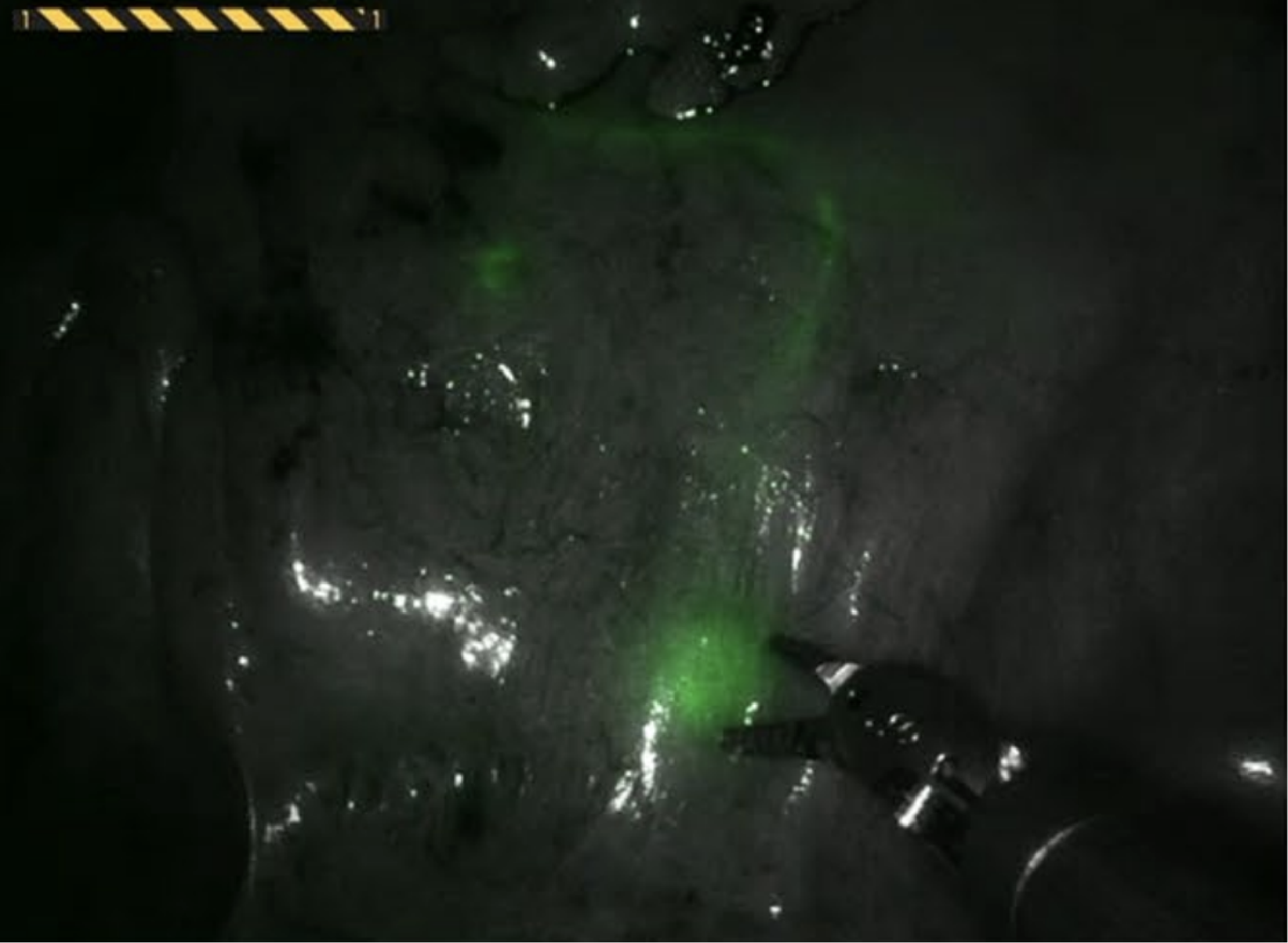New publication by Sikkenk et al. in Surgical Endoscopy

Our latest publication by Daan Sikkenk et al. entitled ‘Robot‑assisted fuorescent sentinel lymph node identifcation in early‑stage colon cancer’ can be found here.
Abstract
Background Patients with cT1-2 colon cancer (CC) have a 10–20% risk of lymph node metastases. Sentinel lymph node identification (SLNi) could improve staging and reduce morbidity in future organ-preserving CC surgery. This pilot study aimed to assess safety and feasibility of robot-assisted fuorescence-guided SLNi using submucosally injected indocyanine green (ICG) in patients with cT1-2N0M0 CC.
Methods Ten consecutive patients with cT1-2N0M0 CC were included in this prospective feasibility study. Intraoperative submucosal, peritumoral injection of ICG was performed during a colonoscopy. Subsequently, the near-infrared fluorescence ‘Firefy’ mode of the da Vinci Xi robotic surgical system was used for SLNi. SLNs were marked with a suture, after which a segmental colectomy was performed. The SLN was postoperatively ultrastaged using serial slicing and immunohistochemistry, in addition to the standard pathological examination of the specimen. Colonoscopy time, detection time (time from ICG injection to first SLNi), and total SLNi time were measured (time from the start of colonoscopy to start of segmental resection). Intraoperative, postoperative, and pathological outcomes were registered.
Results In all patients, at least one SLN was identified (mean 2.3 SLNs, SLN diameter range 1–13 mm). No tracer-related adverse events were noted. Median colonoscopy time was 12 min, detection time was 6 min, and total SLNi time was 30.5 min. Two patients had lymph node metastases present in the SLN, and there were no patients with false negative SLNs. No patient was upstaged due to ultrastaging of the SLN after an initial negative standard pathological examination. Half of the patients unexpectedly had pT3 tumours.
Conclusions Robot-assisted fluorescence-guided SLNi using submucosally injected ICG in ten patients with cT1-2N0M0 CC was safe and feasible. SLNi was performed in an acceptable timespan and SLNs down to 1 mm were detected. All lymph node metastases would have been detected if SLN biopsy had been performed.
